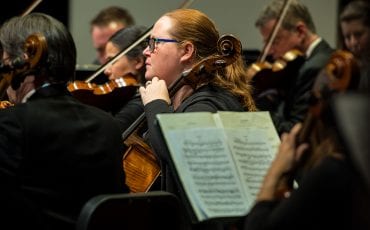Parenting in a Tech World: Local Atlanta Tech Experts Share their Tips

Titania Jordan and Matt McKee
Atlanta tech experts give advice for parenting in the 21st century. Atlanta Parent recently spoke to Titania Jordan and Matt McKee, authors of the new book “Parenting in a Tech World.” They shared their tips for families and technology use.
“Parenting in a Tech World” covers how to talk to kids about technology, resources, setting up parental controls and more. Jordan is the CMO and Chief Parent Officer of Bark Technologies, as well as the current host of “Tech Connect.” McKee is an author, public speaker, entrepreneur and the VP of Business Development at Bark. Jordan is the mother of 11-year-old Jackson, and McKee is the father of 16-year-old Patriot and 13-year-old Azlan.
 What inspired you to write this book?
What inspired you to write this book?
TJ: Bark and Matt and I are all very fortunate to have a variety of platforms where parents reach out to us. We kept getting the same questions, so we felt really compelled to create a book to help. We want to educate and empower parents to be the best parents they can be in this new age.
MM: We want to give parents hope to fight their fear of technology. When you put these principles into place, you’ll see a different kid, which means you’ll have a different relationship. We’re learning to live with technology as we allow it into our lives, so we give technology its purpose.
When your children are different ages, how do you talk to them about access and devices, especially if the younger child isn’t allowed the technology yet?
MM: No matter what you do as a parent, it’s not fair. As a parent, it’s about having expectations and setting those guardrails, it’s not about what’s fair. Tell your child, “It’s about your privacy as a kid and your protection. It’s my job to help with both.” My wife and I set the expectation that our children wouldn’t get cell service until sixth grade, and we stuck with that.
How do you talk to other caregivers about the limits you’ve set for your children?
TJ: Have those uncomfortable but direct conversations about tech access and dangers. Be an ally. This is not a competition. We are digital caregivers together, so we’ll figure it out together. They will have conversations with kids that they wouldn’t dream of having. Tell them, “It’s okay to discuss mental health, tricky people, exploitation with my children.” Let your kids know that the caregiver is a safe place for them.
If you’re used to being reachable after work, how do you talk to your boss about the technology limits you’re putting in place for you and your family?
TJ: If you have the luxury and your boss is understanding, put it aside. We’re so used to getting that notification and thinking, “I have to respond.” You absolutely don’t. Tell your kids, “I’m looking out for our family by setting aside this time that’s for us.” Your children will learn by example more so than by what you tell them.
MM: It doesn’t have to be dinner. Dinner’s easy, since most people are together for that meal, but if that doesn’t work for you, make sure that setting some time away from devices is a priority. Use the calendar to set time limits.
What’s your advice for dealing with parental guilt when you break your tech rules?
TJ: When you go take a shower, and you give your child the iPad for 10 minutes, and it turns into two hours, don’t beat yourself up about it. Try to rein it in. It’s never too late to get started, but it will get harder. Don’t ever give up hope. If you’re feeling overwhelmed, alone, confused, reach out to a therapist or talk to other parents to get feedback. Trust your gut. As a parent, you have an innate superpower to know what’s right for your child.
MM: The promise of tech and the practice of tech are different. With the promise of tech, you can do things – you can connect with your grandparents, you can learn from anywhere. But with the practice of it, how are you actually using it? You can say, “I don’t like how I’m using it,” and you can change that.
How has the pandemic changed your family’s technology usage?
TJ: At the beginning, it was very easy for the screen to be the new sibling, babysitter, parent. For a few weeks, then a month, we thought this was temporary. But it has not been, and my child’s mental health was being adversely affected. I reached out to a therapist who told me to make sure he was taking a break. We make sure he takes breaks, whether that’s voluntarily, using parental controls or a combination. Do what you can to protect your kids, and give yourself grace.
What advice would you give parents who want to implement these strategies for their kids without following the new rules themselves?
TJ: Think about the future narrative of your child’s life. When they’re 18 and on their own, do you want them to be constantly in front of a screen and prioritizing screen relationships over personal and human connection? If you don’t want them to live like that, you don’t have a choice. You have to lead by example. Own up to the fact that these devices are addictive. Be transparent and reiterate what’s important through words and actions to support the long-term goal of who you want your child to become.
MM: It comes down to what you celebrate as a family. You get to celebrate a lot of things, and those memories last a lifetime. It’s rare that you celebrate something that you consumed, or say to your family, “Do you remember that YouTube video we saw as a family in 2014?” But when you create something as a family, that’s what you remember and frame and put on the walls.
How do you talk to your children about what they see on social media that might affect them emotionally?
TJ: As a young teenager struggling with body image, confidence, wanting to feel included, social media can compound these issues. Build their confidence outside of social media. Compliment their intellect, kindness, contributions to society, humor. Remind them that devices and profiles are curated. It’s like how everybody puts on their Sunday best to go to church or synagogue. What you’re seeing has been filtered or edited, so it’s not real life. It also comes down to what you’re modeling. When you post content, are you celebrating the likes and comments as wins? That’ll become what’s important for them.
MM: No matter how messy your family is, we’re the safest place for our kids. As a parent and a guardian, you want your kids to always feel safe and loved. Have a conversation about mental health and stability, and build their confidence and let them know this is a place that you are loved and accepted, and we’re fighting for you, which will lessen the blow of being left out.
Online Safety Tune-up
Not sure where to start? Use these tips to check your family’s technology usage.
Create a technology contract
A technology contract is a great way for your family to collaborate on rules for using devices and accessing the internet. It can help make sure the whole family is on the same page about how to get the most out of technology, and – most importantly – how to stay safer online.
Make use of apps to connect with other parents
While you’re probably not arranging for carpool pickups and dropoffs right now, communicating with the guardians of your children’s friends can be a good source of support, information, and even humor while you navigate online schooling.
Encourage healthy digital habits
Kids look to their parents to learn how the world works, and it’s up to us to make sure we’re passing on good digital habits – from setting good examples to establishing digital boundaries.
Host a virtual tech night
This Tech Night Resources page is filled with everything you’d need to help educate families in your communities about technology and social media, including free videos, downloadable PDFs, and more.
Learn more about your kid’s school-issued tech
Many students get access to digital technologies like cloud storage for the first time at school, and parents may not be familiar with them – or their risks.







